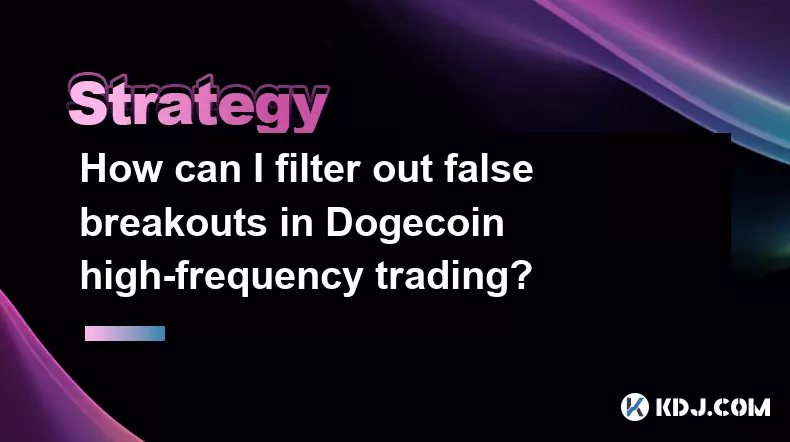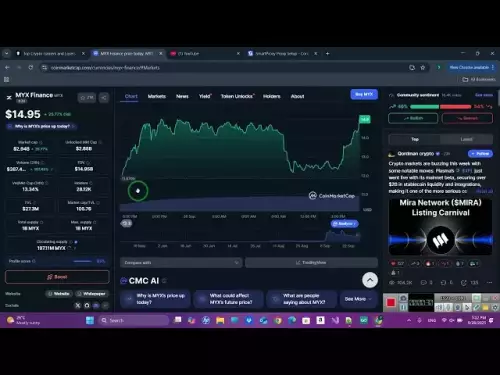-
 bitcoin
bitcoin $109547.008142 USD
0.04% -
 ethereum
ethereum $4011.838726 USD
-0.05% -
 tether
tether $1.000402 USD
-0.01% -
 xrp
xrp $2.798606 USD
0.88% -
 bnb
bnb $970.877944 USD
1.39% -
 solana
solana $202.237275 USD
-0.95% -
 usd-coin
usd-coin $0.999673 USD
0.00% -
 dogecoin
dogecoin $0.229294 USD
-1.15% -
 tron
tron $0.336370 USD
-0.45% -
 cardano
cardano $0.777260 USD
-1.66% -
 hyperliquid
hyperliquid $45.503019 USD
1.73% -
 ethena-usde
ethena-usde $1.000362 USD
0.01% -
 chainlink
chainlink $20.785303 USD
-1.10% -
 avalanche
avalanche $28.755822 USD
-0.11% -
 stellar
stellar $0.358303 USD
-0.48%
How to go long and short in the Bitcoin market? Short-term trading profit method
Going long means buying Bitcoin expecting its price to rise, while going short involves selling borrowed Bitcoin anticipating a price drop, both key for short-term trading.
Jun 06, 2025 at 05:42 pm

Trading in the Bitcoin market offers investors the opportunity to profit from both rising and falling prices through strategies known as going long and going short. Understanding these strategies is crucial for anyone looking to engage in short-term trading and maximize their potential profits. In this article, we will explore the methods of going long and short in the Bitcoin market, along with specific techniques for short-term trading.
What Does It Mean to Go Long in the Bitcoin Market?
Going long in the Bitcoin market means buying Bitcoin with the expectation that its price will increase. Traders aim to profit from this anticipated price rise by selling the Bitcoin at a higher price than they purchased it.
To go long on Bitcoin, follow these steps:
- Choose a reputable exchange: Select a cryptocurrency exchange that supports Bitcoin trading and has a strong reputation for security and reliability.
- Fund your account: Deposit funds into your exchange account using one of the available payment methods, such as bank transfer or credit card.
- Place a buy order: Navigate to the Bitcoin trading section of the exchange and place a buy order at the current market price or set a limit order at a specific price.
- Monitor the market: Keep an eye on Bitcoin's price movements and market trends to determine the best time to sell.
- Sell your Bitcoin: Once the price has risen to your desired level, place a sell order to close your position and realize your profit.
What Does It Mean to Go Short in the Bitcoin Market?
Going short in the Bitcoin market involves selling Bitcoin that you do not own, with the expectation that its price will decrease. Traders aim to profit from this anticipated price drop by buying back the Bitcoin at a lower price and returning it to the lender.
To go short on Bitcoin, you can use a method called margin trading, which allows you to borrow Bitcoin from the exchange. Here’s how to do it:
- Select an exchange that offers margin trading: Choose an exchange that provides margin trading services for Bitcoin.
- Open a margin account: Register for a margin account on the exchange, which will require you to deposit collateral.
- Borrow Bitcoin: Use your collateral to borrow Bitcoin from the exchange.
- Sell the borrowed Bitcoin: Place a sell order for the borrowed Bitcoin at the current market price.
- Monitor the market: Watch Bitcoin's price closely to determine when to buy it back.
- Buy back the Bitcoin: Once the price has fallen to your desired level, place a buy order to repurchase the Bitcoin at a lower price.
- Return the Bitcoin: Use the repurchased Bitcoin to repay the loan to the exchange, keeping the difference as your profit.
Short-Term Trading Strategies for Bitcoin
Short-term trading in the Bitcoin market involves making quick trades to capitalize on small price movements. Here are some effective strategies for short-term trading:
Scalping
Scalping is a strategy that involves making numerous trades throughout the day to profit from small price changes. Scalpers aim to accumulate small profits that can add up over time.
To scalp Bitcoin:
- Choose a volatile period: Identify times when the Bitcoin market is experiencing high volatility, as this is when price movements are more frequent.
- Use technical analysis: Utilize technical indicators such as moving averages, RSI, and Bollinger Bands to identify entry and exit points.
- Set tight stop-loss orders: Place stop-loss orders to limit potential losses on each trade.
- Execute trades quickly: Make quick buy and sell decisions to capitalize on small price movements.
Day Trading
Day trading involves opening and closing positions within the same trading day. Day traders aim to profit from intraday price movements without holding positions overnight.
To day trade Bitcoin:
- Monitor market trends: Keep an eye on Bitcoin's price throughout the day and identify short-term trends.
- Use candlestick patterns: Analyze candlestick charts to spot potential reversals and continuation patterns.
- Set clear entry and exit points: Determine your entry and exit points based on your analysis and stick to them.
- Avoid overnight risk: Close all positions before the market closes to avoid overnight price fluctuations.
Swing Trading
Swing trading involves holding positions for several days to a few weeks to capitalize on medium-term price movements. Swing traders aim to profit from larger price swings than those targeted by scalpers and day traders.
To swing trade Bitcoin:
- Identify trends: Use technical analysis to identify the overall trend of Bitcoin's price.
- Look for entry points: Find entry points at the beginning of a new trend or during pullbacks within an existing trend.
- Set profit targets: Determine your profit targets based on resistance levels or Fibonacci retracement levels.
- Use stop-loss orders: Place stop-loss orders to protect your capital in case the market moves against your position.
Risk Management in Short-Term Bitcoin Trading
Effective risk management is essential for success in short-term Bitcoin trading. Here are some key principles to follow:
- Use stop-loss orders: Always set stop-loss orders to limit potential losses on each trade.
- Diversify your trades: Spread your risk by trading multiple cryptocurrencies or using different trading strategies.
- Manage your leverage: Be cautious with leverage, as it can amplify both gains and losses.
- Keep emotions in check: Avoid making impulsive decisions based on fear or greed, and stick to your trading plan.
Tools and Resources for Bitcoin Trading
To enhance your short-term trading in the Bitcoin market, consider using the following tools and resources:
- Trading platforms: Use reputable trading platforms that offer advanced charting tools and real-time market data.
- Technical analysis software: Utilize software that provides a wide range of technical indicators and drawing tools to analyze Bitcoin's price movements.
- News and analysis websites: Stay informed about market news and analysis from reliable sources to make more informed trading decisions.
- Trading journals: Keep a trading journal to track your trades, analyze your performance, and identify areas for improvement.
Frequently Asked Questions
Q: Can I go long and short on the same day in the Bitcoin market?A: Yes, it is possible to go long and short on the same day in the Bitcoin market. This strategy, known as scalping, involves making multiple trades throughout the day to profit from small price movements. However, it requires careful monitoring of the market and quick decision-making.
Q: What is the minimum amount of Bitcoin I need to start short-term trading?A: The minimum amount of Bitcoin required to start short-term trading varies depending on the exchange and the trading strategy you choose. Some exchanges allow you to trade fractions of a Bitcoin, while others may have minimum trade sizes. It's important to check the specific requirements of your chosen exchange and consider your risk tolerance when deciding how much to invest.
Q: How can I improve my short-term trading skills in the Bitcoin market?A: To improve your short-term trading skills in the Bitcoin market, consider the following:
- Practice with a demo account: Many exchanges offer demo accounts where you can practice trading without risking real money.
- Study technical analysis: Learn how to use technical indicators and chart patterns to make more informed trading decisions.
- Stay updated with market news: Keep abreast of market news and events that can impact Bitcoin's price.
- Review your trades: Regularly review your trading journal to identify what works and what doesn't, and adjust your strategies accordingly.
A: The profitability of short-term trading versus long-term investing in the Bitcoin market depends on various factors, including market conditions, trading skills, and risk tolerance. Short-term trading can offer the potential for quick profits but comes with higher risk and requires more active management. Long-term investing, on the other hand, may offer more stable returns over time but requires patience and a longer investment horizon.
Disclaimer:info@kdj.com
The information provided is not trading advice. kdj.com does not assume any responsibility for any investments made based on the information provided in this article. Cryptocurrencies are highly volatile and it is highly recommended that you invest with caution after thorough research!
If you believe that the content used on this website infringes your copyright, please contact us immediately (info@kdj.com) and we will delete it promptly.
- SUI, AAVE, BlockDAG: Decoding the Hottest Trends in Crypto
- 2025-09-29 06:45:13
- Snorter Bot: Your Ticket to 100x Crypto Presale Gems?
- 2025-09-29 06:25:16
- Crypto Casino Craze: Bitcoin Gambling & No Deposit Bonuses in 2025
- 2025-09-29 07:05:17
- Stellar Holds the Line: Fibonacci Levels, Breakout Potential, and XLM's Next Stellar Move
- 2025-09-29 06:45:13
- XRP Payments, Daily Wages, and Ripple Chief: A Revolution in Payroll?
- 2025-09-29 06:25:16
- Bitcoin, MAGAX, and the Surge: What Savvy Investors Are Eyeing Now
- 2025-09-29 07:05:17
Related knowledge

Practical parameter settings for a Bitcoin multi-timeframe moving average system
Sep 18,2025 at 10:54pm
Optimizing Timeframe Combinations for Bitcoin Trading1. Selecting appropriate timeframes is crucial when building a multi-timeframe moving average sys...

How can I filter out false breakouts in Dogecoin high-frequency trading?
Sep 22,2025 at 01:00am
Understanding False Breakouts in Dogecoin Trading1. A false breakout occurs when Dogecoin's price appears to move beyond a defined support or resistan...

Techniques for identifying tops and bottoms in the Bitcoin on-chain NVT model
Sep 20,2025 at 07:54pm
Understanding the NVT Model in Bitcoin Analysis1. The Network Value to Transactions (NVT) ratio is often described as the 'P/E ratio' of the cryptocur...

What does the surge in open interest in Bitcoincoin futures mean?
Sep 20,2025 at 11:18pm
Understanding the Surge in Dogecoin Futures Open Interest1. A surge in open interest within Dogecoin futures indicates a growing number of active cont...

How can I use the Ethereum USDT premium to gauge market sentiment?
Sep 18,2025 at 11:55pm
Understanding the Ethereum USDT Premium1. The Ethereum USDT premium refers to the price difference between USDT (Tether) traded on Ethereum-based plat...

What should I do if Ethereum staking yields decline?
Sep 20,2025 at 06:18am
Understanding the Causes Behind Declining Ethereum Staking Yields1. The Ethereum network transitioned to a proof-of-stake consensus mechanism with the...

Practical parameter settings for a Bitcoin multi-timeframe moving average system
Sep 18,2025 at 10:54pm
Optimizing Timeframe Combinations for Bitcoin Trading1. Selecting appropriate timeframes is crucial when building a multi-timeframe moving average sys...

How can I filter out false breakouts in Dogecoin high-frequency trading?
Sep 22,2025 at 01:00am
Understanding False Breakouts in Dogecoin Trading1. A false breakout occurs when Dogecoin's price appears to move beyond a defined support or resistan...

Techniques for identifying tops and bottoms in the Bitcoin on-chain NVT model
Sep 20,2025 at 07:54pm
Understanding the NVT Model in Bitcoin Analysis1. The Network Value to Transactions (NVT) ratio is often described as the 'P/E ratio' of the cryptocur...

What does the surge in open interest in Bitcoincoin futures mean?
Sep 20,2025 at 11:18pm
Understanding the Surge in Dogecoin Futures Open Interest1. A surge in open interest within Dogecoin futures indicates a growing number of active cont...

How can I use the Ethereum USDT premium to gauge market sentiment?
Sep 18,2025 at 11:55pm
Understanding the Ethereum USDT Premium1. The Ethereum USDT premium refers to the price difference between USDT (Tether) traded on Ethereum-based plat...

What should I do if Ethereum staking yields decline?
Sep 20,2025 at 06:18am
Understanding the Causes Behind Declining Ethereum Staking Yields1. The Ethereum network transitioned to a proof-of-stake consensus mechanism with the...
See all articles










































































